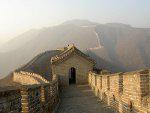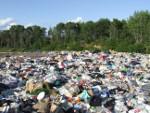 People have been making their mark on our planet for thousands of years primarily in the form of the development and expansion of their settlements. However, the world's largest man-made structure began appearing brick by brick well before the era of our modern steel skyscrapers.
People have been making their mark on our planet for thousands of years primarily in the form of the development and expansion of their settlements. However, the world's largest man-made structure began appearing brick by brick well before the era of our modern steel skyscrapers.
Starting in the 5th century BC, the Chinese began building small sections of wall to protect them from being invaded by tribes and nomadic groups. The Great Wall of China (as it became known), was continually built and maintained right up to the 16th century, becoming man's largest structure that can even be seen from space today.

Built upon a natural salt marsh, around 590 tonnes of refuse was dumped at the site on a daily basis at it's peak and it wasn't until 2001 when the highest point of the site was 25 meters taller than the Statue of Liberty, that EPA stepped in and helped to close the site in March of that year.


